The USDAC imagines an equitable, sustainable economy for all with an actionable policy platform
The work of Springboard for the Arts is rooted in arts-based economic and community development. We believe artists are critical assets in that work, and support them by offering a variety of resources that enable them to make both a living and a life. This is why Springboard is a member of the New Economy Coalition (NEC): because we believe in the vision of a new economy, one that is just, sustainable, and democratic; one that is ethical and community-rooted; and one that does not rely on the exploitation of disenfranchised communities in order to thrive. This is the third in a series of stories highlighting the work of other arts-based NEC member organizations and affiliated organizations that have developed ways to sustain themselves while also sustaining artists, demonstrating that, yes, a new economy is possible. Read the rest of the series here.
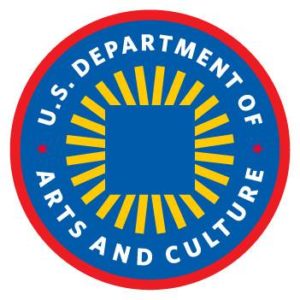 The U.S. Department of Arts and Culture (USDAC) is a grassroots cultural organization with a national network of citizen artists, affiliate organizations, and outposts. The work of the USDAC is expansive and ranges everything from national policy platform development to neighborhood-focused local initiatives, but the overarching vision of the USDAC to be a “people-powered…action network inciting creativity and social imagination to shape a culture of empathy, equity, and belonging.” Creative Exchange spoke with USDAC co-founder and “Chief Policy Wonk” Arlene Goldbard for more detail about the NEC member organization’s many-pronged efforts at shaping and promoting an equitable and sustainable creativity-powered economy.
The U.S. Department of Arts and Culture (USDAC) is a grassroots cultural organization with a national network of citizen artists, affiliate organizations, and outposts. The work of the USDAC is expansive and ranges everything from national policy platform development to neighborhood-focused local initiatives, but the overarching vision of the USDAC to be a “people-powered…action network inciting creativity and social imagination to shape a culture of empathy, equity, and belonging.” Creative Exchange spoke with USDAC co-founder and “Chief Policy Wonk” Arlene Goldbard for more detail about the NEC member organization’s many-pronged efforts at shaping and promoting an equitable and sustainable creativity-powered economy.
Creative Exchange: Describe the economic policy work of the U.S. Department of Arts and Culture (USDAC).
Arlene Goldbard: The USDAC is a big tent. When we started out, we looked at the history of national artist-led organizing and realized that we wanted to engage not only artists, but everyone else, in recognizing and pursuing the public interest in culture. We understood that would require both grassroots cultural action and national-level policy and action, and that the two must feed each other.
Policy had to be grounded in grassroots experience, crafted by folks with a national outlook and policy expertise, tested in communities, and revised based on that experience. We saw that historically there have been real limitations in trying to influence policy via an organization limited to artists. For example, campaigning for more arts funding tends to be weak when the argument is from the direct beneficiaries for their own funding: “Support us, we’re great.” That goes a long way in explaining why NEA funding, for instance, is stuck at less than half its real value in 1980. So we don’t focus on special-interest pleading for artists, but on issues and opportunities that benefit artists and everyone else. To make that understanding concrete and actionable, we decided to create a platform of ten policy proposals.
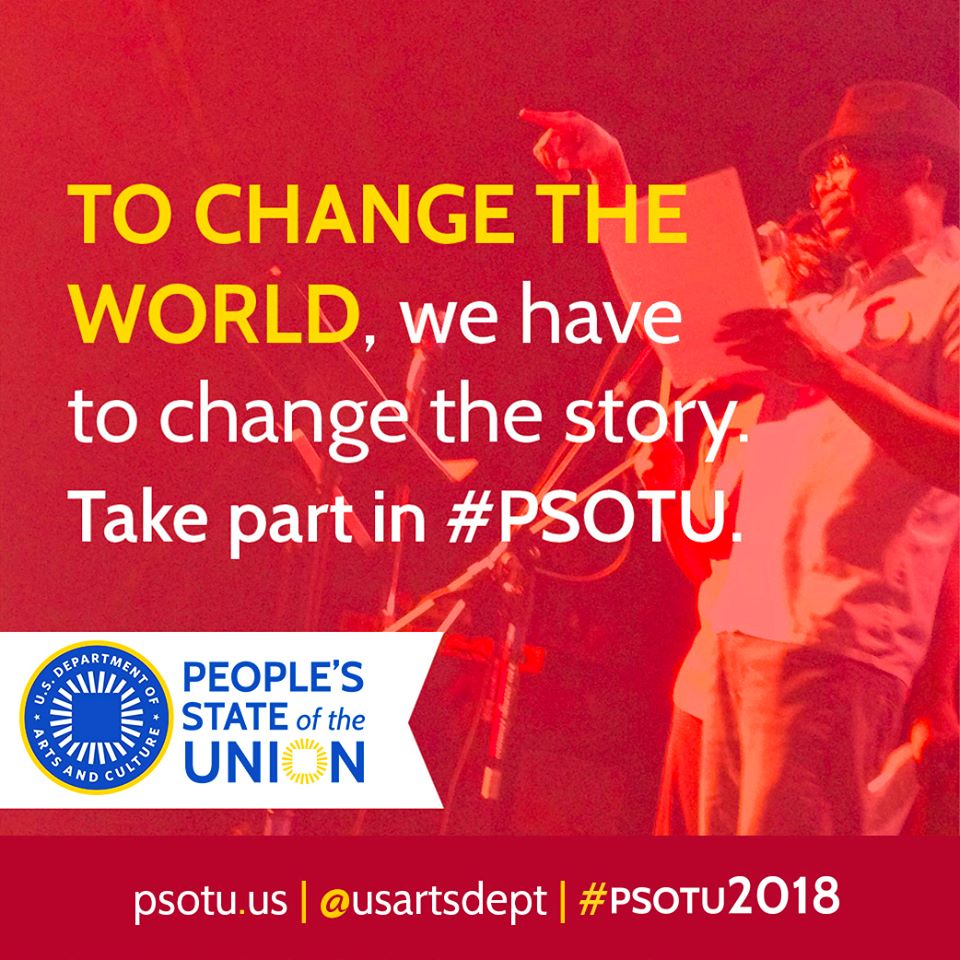
The policy platform we released in November 2016 (Standing for Cultural Democracy: The USDAC’s Policy and Action Platform) was based on years of input from people across the U.S. as to the issues and visions they found most resonant. They shared their stories via our annual civic ritual and story-sharing action, the People’s State of the Union, and through other national and local gatherings and dialogues. Then our National Cabinet, an amazing group of thought and action leaders, helped translate these concerns and aspirations into ten policy proposals embodying our commitment to cultural democracy and our inclusive approach to cultural policy—speaking not just to arts funding, but to the full range of necessary social imagination and action.
So, for example, Standing for Cultural Democracy approaches the question of sustainable livelihood in several ways, calling for a new public service jobs program; for integrating artists’ work into all social programs; for a basic income grant—a guaranteed annual wage for everyone, including artists; and offers new revenue models to help support such initiatives. Obviously, the public-sector platform points, such as a “new WPA,” aren’t going to be enacted under the current administration. But it’s essential to dream out loud, to propose what ought to be rather than being limited to the immediately doable, and to nurture the national conversation that will bring these ideas into the mainstream.
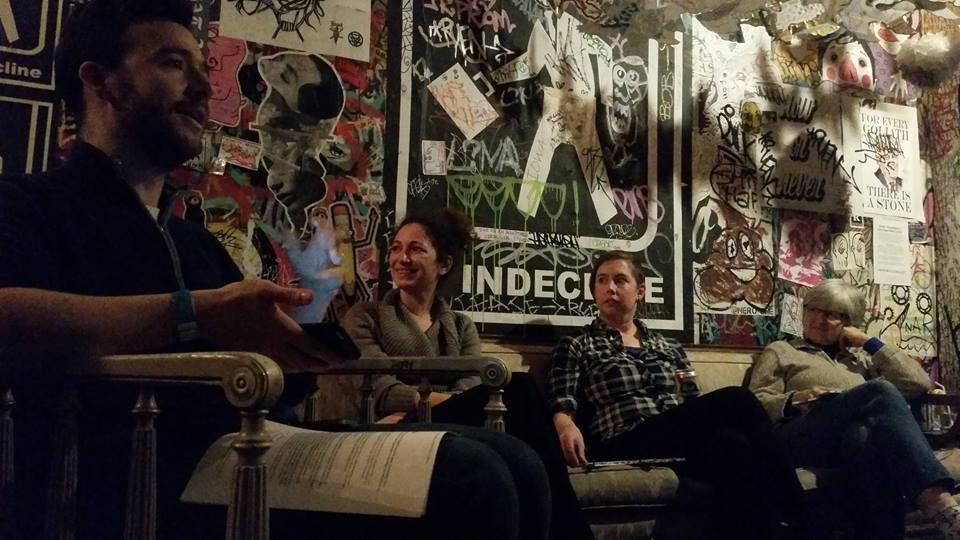
CE: What does the “new” or “creative” economy mean to the USDAC, and what is the USDAC’s vision for building creative economy for artists so they can make a sustainable living with their practices?
AG: The old economy is based on extraction and exploitation, scarcity and competition, winners and losers. In contrast, artists and creative organizers who work in community have long been enacting a kind of gift economy. Artistic gifts—performances, writings, public art and so on offering beauty and meaning to build awareness, acknowledgement, and healing action—are shared with the community as an investment in culture shift, in bringing about a more loving, just, and equitable future. Support for that creative work must either be funded as a public good or it must generate income via entrepreneurship that is both social and cultural.
CE: What are some ways in which the USDAC is trying to make that happen?
AG: Regarding the Standing for Cultural Democracy platform, much of it deals either directly or indirectly with economic issues, from the creation of service jobs to a basic income grant and, finally, recommendations on how to pay for all of it. The Cultural Impact Study also touches on socially-rooted economic issues, as an underlying problem in cultural development tends to be the seemingly inevitable cycle of gentrification and displacement.
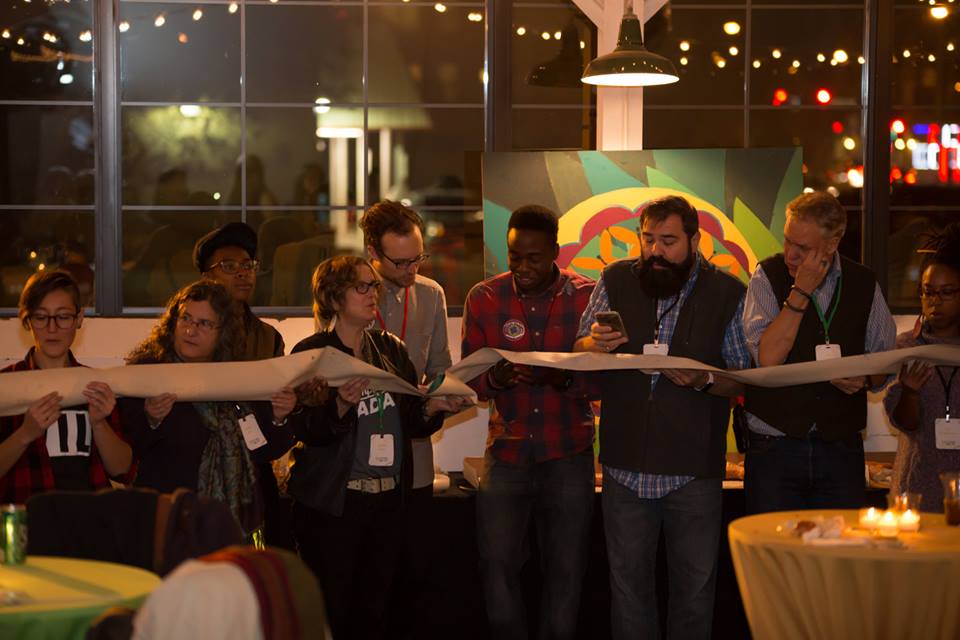
CE: How did the USDAC develop this platform, what considerations were taken into account when developing it, and how it might translate from platform to policy?
AG: Standing for Cultural Democracy was launched at our first national convening, Culture/SHIFT 2016, hosted by and in collaboration with the Regional Arts Commission in St. Louis. It took place ten days after the presidential election. We had no illusion that the platform would immediately be embraced by whomever won the election, but the election results ensured that our strategy should be to support dialogue and experimentation at the local level, building up to regional and national action at a later date.
Through USDAC Lab, we made microgrants to prototype projects that demonstrated potential to put one of the platform proposals into action. Those have just come to a close and I’m now interviewing the grantees in preparation for sharing their experience. In short, it’s an iterative process of experimenting, learning, sharing, and building awareness.
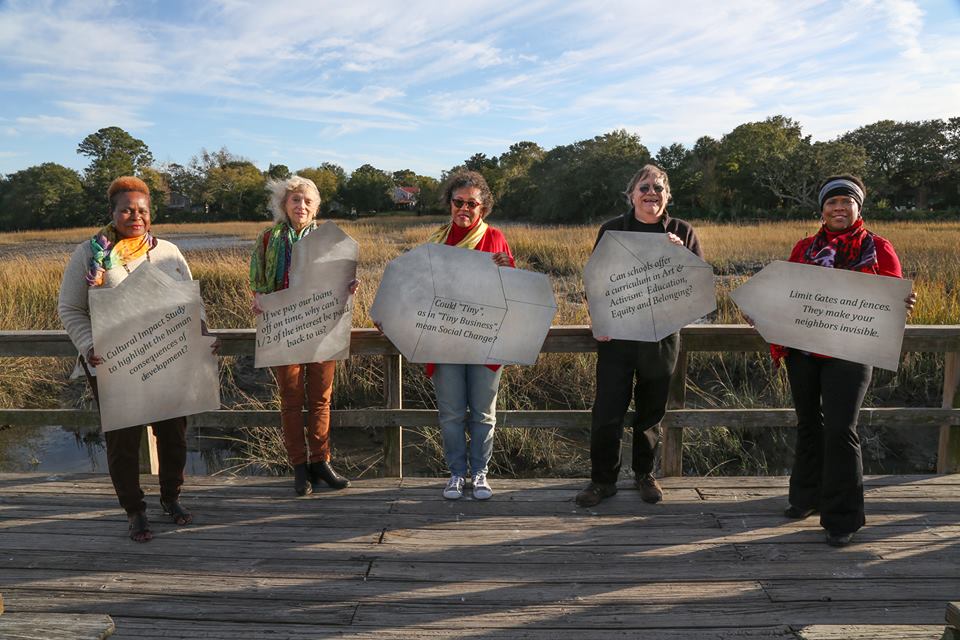
CE: The Charleston Outpost of the USDAC, the Charleston Rhizome Collective, is working very much within an economic development framework. What kind of work are they doing and how it is different than any of the other USDAC Outposts? Has their economic development work inspired other Outposts to engage in similar work?
AG: Each Outpost sets its own agenda, so each is unique. We’re just about to launch our first concerted call for Outposts, so we’ll be able to share more when the applications roll in and there’s a larger cohort. We had our first quarterly Outpost cohort call just last month, so there hasn’t been much time for them to influence each other, but clearly, that is coming.
The ConNECKtedTOO project in Charleston has had a great evolution. We gave them a policy prototype microgrant that was used to promote ideas such as the Cultural Impact Study—assessing impact on social and cultural fabric before new development, rezoning, or other potentially displacing actions are considered—during a major interactive exhibit at Charleston’s City Gallery last summer. They are continuing to pursue the Cultural Impact Study policy, petitioning local government and engaging other local supporters. But right now they are busy with a wonderful cultural and community development project focused on “tiny businesses” that give a community its flavor and warmth, supported by an ArtPlace America grant.
CE: The USDAC exists as an entity to support communities in imagining a new economy. In addition to national policy work, the USDAC also hosts “Imaginings” through local organizers that are tools for starting conversations around imagining new economies based around art, and also encourage thinking about how communities of different scales can use Imaginings, story circles, and different arts-based tools as vehicles of transformation in giving people a framework for discussing new possibilities.
What makes for a successful Imagining? What are some actionable items that have come from past Imaginings?
AG: For the USDAC’s first two years, part of our organizing model was to develop a learning and action community with volunteer Cultural Agents, three cohorts of approximately 18 individuals organizing in their own communities. The focal action for each Cultural Agent was an Imagining, an art-infused dialogue and gathering inviting the members of each community to collectively envision the future they want to help bring about. Imaginings took many forms, but what they all had in common was enlisting people’s social imagination and creativity, pleasure and purpose aligned. Key success factors were radical inclusivity, participatory planning and execution, a warm welcome, and an event infused with fun, beauty, and meaning.
Some communities formed local groups (now named Outposts) as a focal point for organizing toward the shared futures that emerged from their Imaginings. For example, in West Baltimore, a longstanding community venue, the Arch Social Club, has become a focal point for local action around transportation and community development. Some Imaginings focused on specific themes of keen local interest. After the New York City Imagining on Gentrification and Displacement, for instance, folks went on to mount “City of Justice,” a hugely popular day-long interactive event at the Brooklyn Museum, and they are core to our newly forming Bureau that focuses on these issues.
We’ll be publishing a DIY guide to Imaginings later this year, and we’re very excited about that.
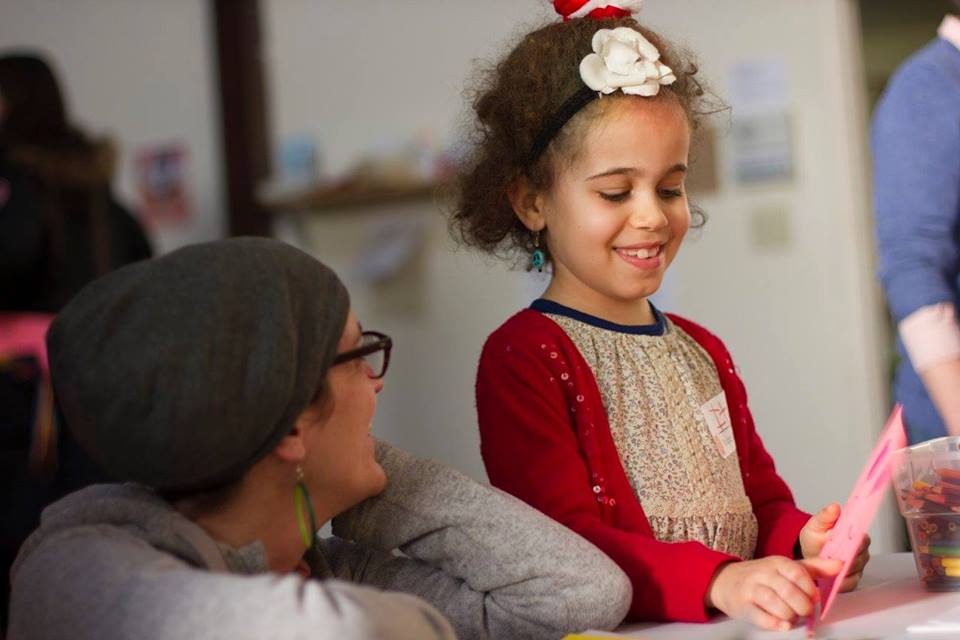
CE: As far as the vision and mission of the USDAC is concerned, are arts the future of economic development? How can we ensure they are?
AG: To change the world, we have to change the story. Everything we now know about how people make decisions tells us that parable and metaphor, image and emotion are just as important as—some say more determinative than—facts and figures. So the future of all forms of equitable and visionary social development, including economic development, definitely relies on applying our storytelling gifts to crafting compelling visions, and our relationship-building skills to helping people see roles for themselves in bringing about culture shift, including the shift to a new economy.
As to whether artistic enterprises have special powers to trigger economic development, the jury is still out. The typical evidence marshaled in this debate turns on things like economic multiplier effects: each dollar spent on a theater ticket triggers so much more spending on parking, restaurants and bars, etc., leading to more and more job creation. The problem is that each dollar spent on attending a football game or mud-wrestling match has the same impact.
Speaking personally, I’m dubious. I doubt the facts can support any statement with this formula: “X is the future of economic development.” The future of economic development is multifaceted. Communities that prize creativity, that value social and cultural fabric built up over time, and that support zoning, funding, and other policies to embody those values will be more vibrant, generative, and attractive to residents, visitors, and investors alike. So arts-related economic development initiatives can offer more synergies, making them a key part of the future of economic development. But the key? I don’t think that can be substantiated.
